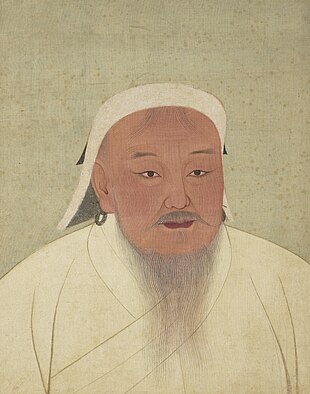
Back پەیمانی بالجونا CKB میثاق بالجونا Persian Perjanjian Baljuna ID Perjanjian Baljuna Malay Baljuna ahdi Uzbek

The Baljuna Covenant was an oath sworn in mid-1203 AD by Temüjin—the khan of the Mongol tribe and the future Genghis Khan—and a small group of companions, subsequently known as the Baljunatu. Temüjin had risen in power in the service of the Kereit khan Toghrul during the late 12th century. In early 1203, Toghrul was convinced by his son Senggum that Temüjin's proposal of a marriage alliance between his and their families was an attempt to usurp their power. After escaping two successive Kereit ambushes, Temüjin was cornered and comprehensively defeated at the Battle of Qalaqaljid Sands.
Temüjin regrouped the scattered remnants of his forces and retreated to Baljuna, an unidentified river or lake in south-eastern Mongolia. There, he and his closest companions swore an oath of mutual fidelity, promising to share hardships and glories. Having spent the summer recruiting warriors attracted by the ideals of his campaign, Temüjin amassed enough of a force to defeat the Kereit in battle that autumn. Three years later in 1206, having defeated all enemies on the steppe, Temüjin entitled himself Genghis Khan at a kurultai and honoured the Baljunatu with the highest distinctions of his new Mongol Empire. Nineteenth-century historians doubted the episode's historicity because of its omission (probably on account of the heterogeneity of the oath-swearers) from the Secret History of the Mongols, a 13th-century epic poem recounting Temüjin's rise.
© MMXXIII Rich X Search. We shall prevail. All rights reserved. Rich X Search